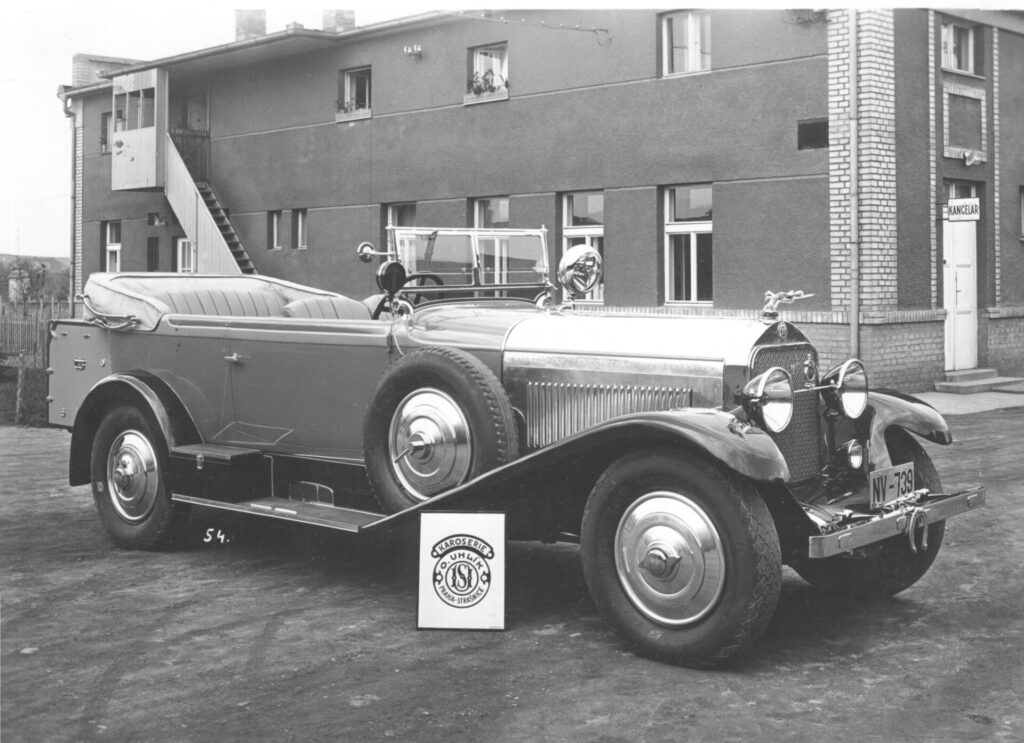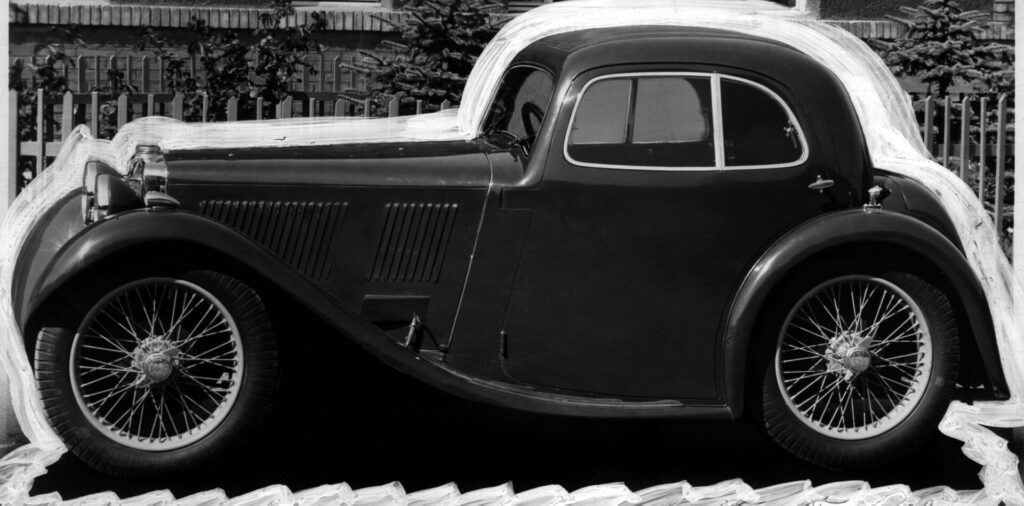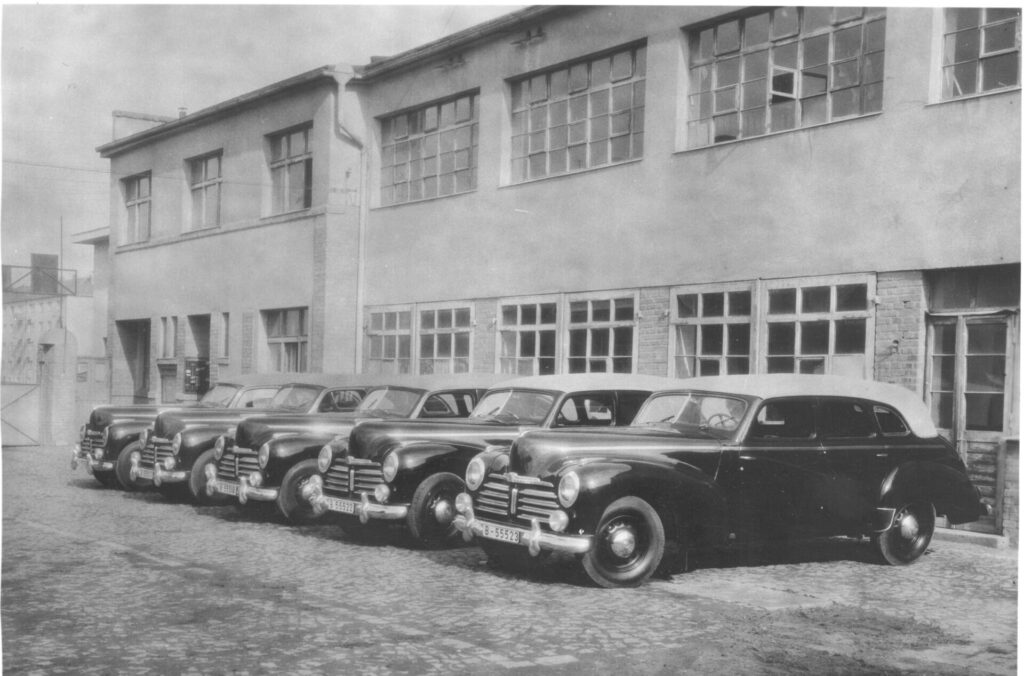Famous coachbuilders: Oldřich Uhlík

The Oldřich Uhlík’s coach build company was one from the best alongside Sodomka, Brožík, Petera, J.O. Jech not only in Czechoslovakia. It produced the unique creations for chassis of the renowned brands as Bugatti, Mercedes-Benz, Minerva and Rolls-Royce. The actual creator, who started from scratch, lived to the very old age, but sadly with depression – the communist regime not only took his estate and interned the old man, but also prohibited him to work in the field and evicted him to the border region.
Oldřich Uhlík learned the trade at the famous wheel-wrights school in Kašperské Hory. The car bodies at that time were built mostly from the wood, including the exterior panels, thick up to 10 mm. As a talented young man after school he joined the Laurin & Klement Company at Mladá Boleslav.
In the early 20s he started with his companions’ business in Holešovice – at the corner of the Plynární and today’s Argentínská Street. The one of the first customers was a racer and a friend of Mrs. Junk, Urban Emmerich, and the owner of the Austro-Daimler. The grandfather of the later play writer, dissident, Czechoslovak and later Czech president Vaclav Havel, let Uhlík to build the car body of the Mercedes for change. It cost him 18,570 CZK including the 10% tax on the luxury and 2% sales tax.
The contracts were made verbally by shaking hands. Only in case of doubts regarding the solidity of the Purchaser Uhlík insured himself by a written contract. That he was lucky with the clients can prove only one debtor in the first six years of the company existence.
In the 1927 Oldřich Uhlík became independent from his companions in the business and moved to a new location Úlavská Street. Especially Strašnice are associated with the best years of his professional life. In the addition to exclusive car body, the contract to a series of the postal busses with the built boxes for correspondence covered his back. Thanks to them the number of the employees could rise to more than 100 people.
To an atypical creations belonged for the example the Roadster “Mercedes-Benz S” with the padded Ostrich leather (which is at the Museum in Sinsheim, Germany) or the bulky six wheels Tatra 72 with a pair of the rear drive axles, adjusted for a world tour, performed in the second half of the 30s, by the scientist Dr. George Baum and his wife. There was also at that time a popular advertising vehicles, such as folk Praga Piccolo, resembling an oversized tube with herbal candies Hašlerky, named after the popular singer Karel Hašler, who was also a successful music publisher, but never achieved fame or riches of his brother in-law, the then already a dollar millionaire Rudolf Friml.
The flourishing Uhlik’s company didn’t slow down even with the prolonged global economic crisis. That’s why after 1939 and the occupation of the rest of Czechoslovakia by Germany, cars were phased out of the service and passed on to repairs and one from the most important contracts became of the fire trucks bodies, as well as chassis for the transport of the machine guns or rails, on those the German Luftwaffe aircrafts supporting the troops of General Rommel aka “desert Fox” landed in North Africa.
After 1945 Czechoslovakia acceded to the nationalization of big companies, the former clientele thinned considerably and the higher interest commanded to devote more ambulance cars (mainly on the chassis of the Praga). Like other European countries the aluminium alloys were used rather than genuinely rare steel, which was due to the conversion of an air production at the market.
Even before the nationalization of Uhlík’s coach build company from the March 1948 was still possible to secure the prestigious contract on chassis developed by Donald Healey for 200 car bodies. Because of the changing situation in Czechoslovakia, Englishmen backed away the promising deal to build the chassis of the car body, which were moved to Albion.
Uhlík had a hard 16 years. At first he went to internment in Svatý Ján under Skalka near Beroun, then to Pardubice to a forced labour camp. The sword of Damocles of half million crowns not paid taxes for nationalized property was hung above him all the time. The official ban to work in the beloved car body field constituted a big blow and as all this wouldn’t be enough, he had to move out from the property in Prague to Chřibská at Děčín.
The old man with the pitifully low retirement benefits had to earn extra money, for example as a security guard in the factory for spices – in fact, he suffered from allergies. He returned to work with the wood, where in the Kašperské Hory once remained as a gravity centre for the construction of individually designed body work. But now he produced only the carriage, helves and the handles. Eight years after the death of Mr. Uhlík, his wife finally got the husbands retribution and officially designated compensation for a ridiculous 550 CZK. The automobile Škoda 1000 MB costed at the time of Uhlík’s death 44 000 CZK.


















